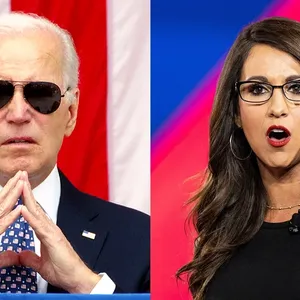Abstinence-only
educators say there's more to their programs than the
''just say no'' mantra of the antidrug movement.
But that's just
what they're saying to Democrats looking to curtail a
program that grew 17-fold--from $10 million in 1997 to
$176 million this year--when the Republicans
controlled Congress.
Democratic
lawmakers have introduced legislation promoting
comprehensive sex education instead of an
abstinence-only curriculum. They want to send money to
schools that stress abstinence while also instructing
students about the health benefits and side effects of
contraceptives.
The abstinence
groups aren't planning on losing any of their federal
funding without a fight. They've opened their own trade
association near the nation's Capitol.
Valerie Huber,
executive director of the National Abstinence Education
Association, said the group's formation is not a response to
Democrats taking control of Congress. ''It really has
nothing to do at all with any current political
climate, just the evolution of the field of abstinence
education,'' she said. Huber acknowledges, though, that the
opening does occur at an important time. ''We
recognize there's been a change inside the beltway.
But that doesn't mean there's a change across America,'' she
said.
Besides launching
their own trade association, abstinence educators hired
a public relations firm with a long list of Republican and
conservative clients.
''They've had
smooth sailing for seven years,'' said James Wagoner,
president of Advocates for Youth, an organization that
promotes sex-ed programs. ''Their hiring of this firm
shows that they know the honeymoon with Congress is
over.''
The abstinence
association will make its case to lawmakers and the public
about a program that Huber said is often misunderstood and
mischaracterized.
''We're not
talking about just avoiding pregnancy or just avoiding teen
birth. We're talking about healthy relationship building.
We're talking about skills in healthy decision making,
goal setting, and providing information on sexually
transmitted diseases.''
Currently,
Congress uses three different programs to fund abstinence
education. The largest of those programs has gone from $20
million to $113 million in seven years. President Bush
is requesting $141 million next year.
The second
largest pot of money, $50 million, goes through the states,
which match that funding with $3 for every $4 they get from
the federal government. The programs teach that sex
outside of marriage is likely to be psychologically
and physically harmful.
The program,
known as Title V, is set to expire this year, setting the
stage for a potential showdown this summer over the
program's future direction and funding levels.
Wade Horn, who
oversaw the two largest abstinence education programs
until he resigned last week, predicted Congress will give
states more flexibility in determining how Title V
money is spent.
But he doesn't
believe Congress will make major funding cuts.
''I think it's
going to evolve, but I don't think it's going to go
away,'' he said. ''I've seen some bills introduced by
Democrats that suggest they want a separate fund
dedicated to comprehensive sex education, but my sense
is that it won't be at the expense of abstinence
education. I think it's a matter of both, not one or the
other.''
Sen. Frank
Lautenberg, a New Jersey Democrat, sponsored the legislation
cited by Horn. He said he doesn't believe abstinence
education is working. His goal is to make both types
of programs available, and he believes schools will
gradually shift their focus to the comprehensive sex
education programs.
Teen birth rates
have been on the decline since 1991. The reasons can be
partially explained through the National Youth Risk Behavior
Survey, which is compiled by the Centers for Disease
Control and Prevention.
For youth in
grades nine through 12, the percentage of youth reporting
ever having sexual intercourse fell from 54.1% in 1991 to
46.8% in 2005.
During that same
time frame, condom use during the last sexual
intercourse increased from 46.2% to 62.8%. However, the use
of a birth control pill before last sexual intercourse
dropped from 20.8% to 17.6%. (AP)


















































































